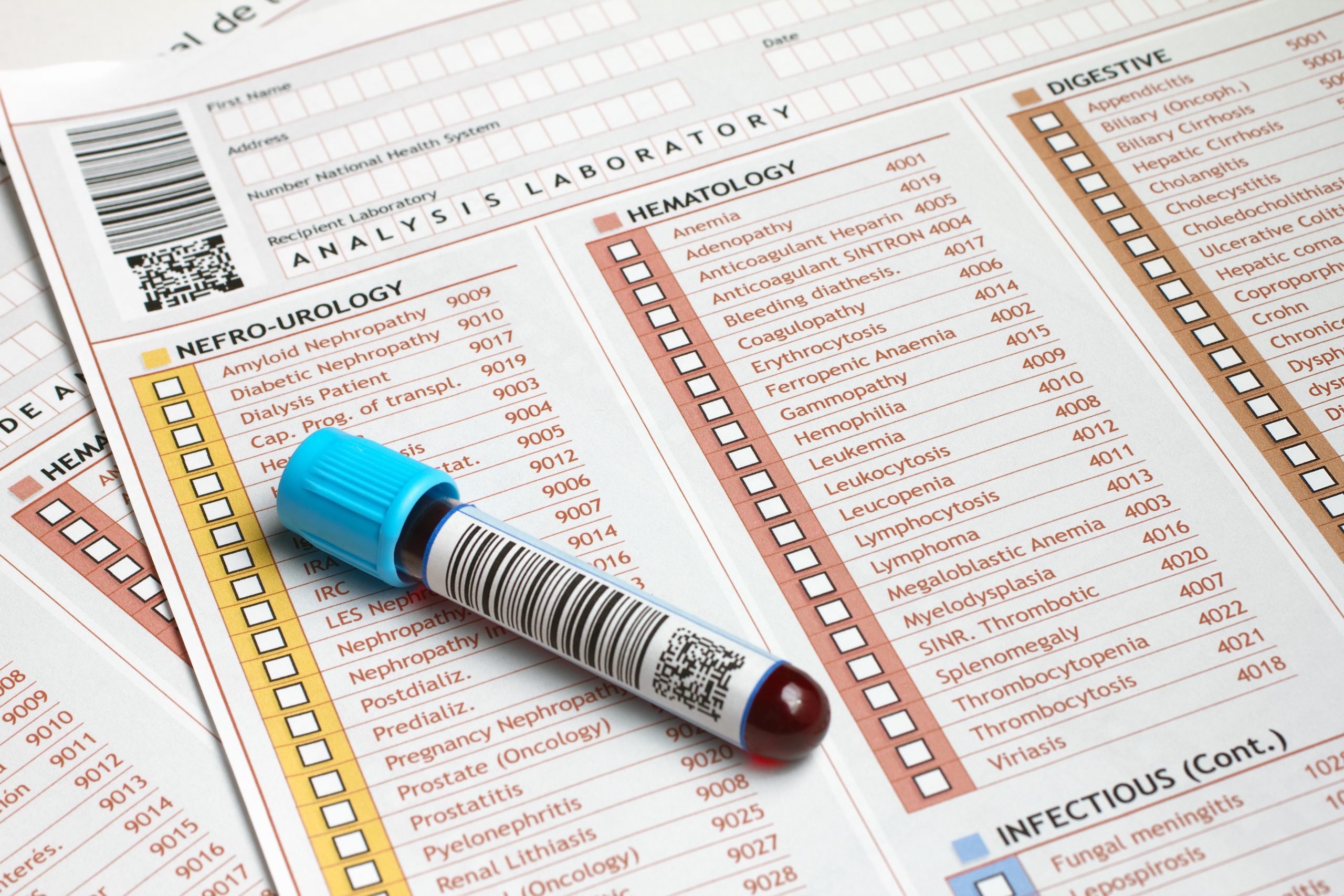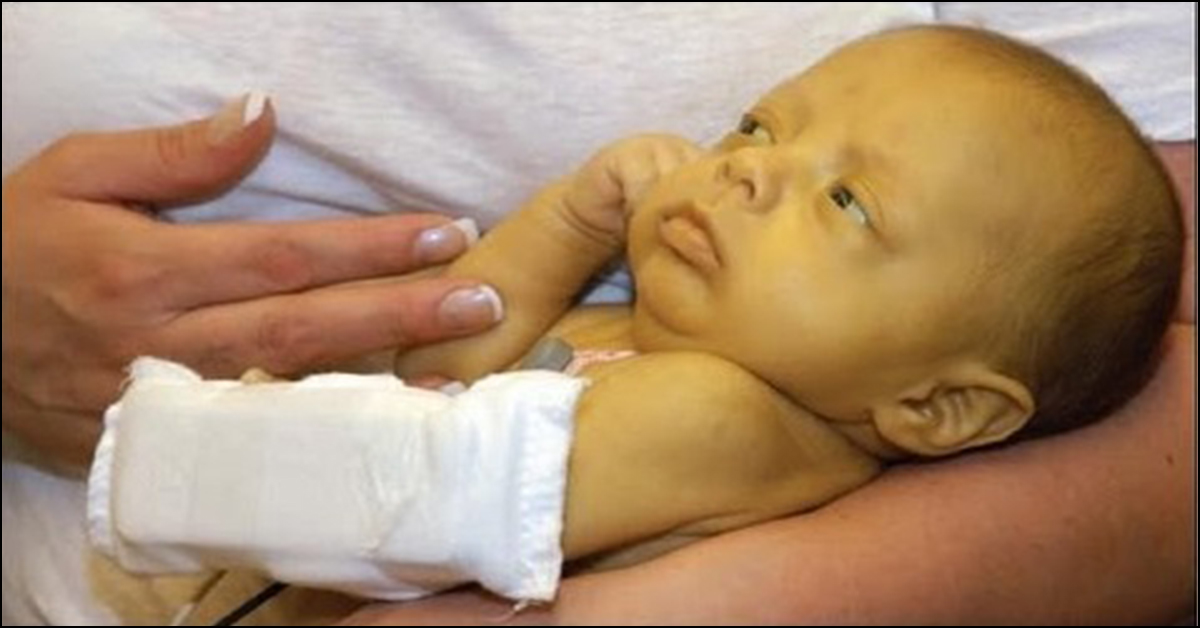Congratulations on your new baby! 👶
When you become a new mom, there are so many things to learn about taking care of your newborn baby. One of the conditions that may catch you by surprise is newborn jaundice. This guide will help you understand what newborn jaundice is, how to identify it in your baby, and what you can do to treat it. With knowledge and understanding, you’ll be able to confidently deal with this common condition.
Excited by the new birth, both you and the pediatrician examine the newborn for the routine. This exam includes inspection of ten fingers and toes, pink color, and good tone among other findings, especially color changes like jaundice as the baby grows.
What is Jaundice?
Jaundice refers to the yellow hue and the process resulting from the deposition of red blood cell breakdown products in the skin. This process requires special enzymes, the liver, and a functional gastrointestinal tract. The delayed processing that occurs in some infants leads to the jaundice process and color.
Jaundice may be physiologic or resulting from this natural course or something pathologic and associated with diseases of red cell metabolism.
How does Neonatal Jaundice occur?
Neonatal jaundice is a yellowing of the skin and eyes in newborn babies. It occurs when there is an excess of bilirubin, a yellow pigment, in the blood. Bilirubin is produced when red blood cells break down. Neonatal jaundice is usually harmless and will resolve on its own within a few weeks.
When can Neonatal Jaundice be abnormal?
However, in some cases, it can be more serious and require treatment. Neonatal jaundice can occur for a variety of reasons, including:
Prematurity
Premature babies are more likely to develop neonatal jaundice because their liver is not yet fully developed and cannot process bilirubin as efficiently as a full-term baby’s liver.
Anatomic abnormalities
Babies with certain anatomic abnormalities, such as congenital heart disease or gastrointestinal malformations, are also at increased risk for neonatal jaundice.
Blood type incompatibility
If a baby has a different blood type than his or her mother (such as Rh incompatibility), this can cause jaundice.
Breastfeeding difficulties
Neonatal jaundice is more common in babies who are not able to breastfeed effectively. This may be due to low birth weight, poor latch, or maternal nipple confusion.
If you think your baby may have neonatal jaundice, it is important to contact your pediatrician. Treatment options include phototherapy (light therapy) and, in some cases, exchange transfusion. With proper treatment, most babies with neonatal jaundice make a full recovery.

How do you Diagnose Jaundice in Newborns?
In the nursery, jaundice is determined by a clinical exam. Physiologic jaundice manifests from 48hrs of life to several weeks thereafter. Jaundice appears from head to toe and may be detected with a blood test.
Can neonatal jaundice cause fever?
In most cases, neonatal jaundice is harmless and will resolve on its own within a few weeks. However, in rare cases, it can be a sign of a more serious underlying condition. Neonatal jaundice can sometimes cause fever, which may be a sign of infection. If your baby has a fever along with other symptoms of illness, please see your doctor as soon as possible. Neonatal jaundice is usually not a cause for concern, but it is important to monitor your baby closely and seek medical attention if you have any concerns.
What happens in Jaundice?
The natural history of jaundice is to slightly worsen prior to resolving by itself in most instances.
The condition is worsened by dehydration or poor feeding. The red cell metabolism is accelerated, with regular feeds and frequent stooling. As well, one may improve jaundice with exposure to sunlight or with artificial phototherapy.
How long does neonatal jaundice last?
Neonatal jaundice usually appears within the first few days after birth and typically resolves on its own within 2 to 3 weeks. However, in some cases, neonatal jaundice can last for several months or longer.

How to treat neonatal jaundice?
Most cases of neonatal jaundice are mild and don’t require treatment. However, some cases can be more severe and may require phototherapy or other medical interventions.
If your baby has neonatal jaundice, there are a few things you can do to help treat it:
More breastfeeding
Make sure they’re getting enough to eat. Breastfeeding is the best way to do this, but if you’re formula-feeding, make sure you’re using the correct type of formula.
Don’t give water
Avoid giving them any extra water.
Rest
Make sure they’re getting plenty of rest.
UV Phototherapy
If your baby’s jaundice is severe, they may need to be treated with ultraviolet phototherapy. This involves placing them under special lights that help break down the bilirubin in their blood. In some cases, babies may also need to be given a blood transfusion.
How to treat neonatal jaundice at home
There are a few things that you can do at home to help ease your baby’s symptoms, which include:
Expose to early morning sunlight
Place your baby under direct sunlight for short periods of time throughout the day. This will help break down the bilirubin in their system.
More feeding
Give your baby plenty of fluids, either through breast milk or formula. This will help them stay hydrated and flush the bilirubin out of their system.
Tummy massage
Gently massage your baby’s tummy in a clockwise direction. This will help with digestion and relieve any discomfort they may be feeling.
If you notice that your baby’s jaundice is getting worse or they are not responding to at-home treatment, be sure to contact their doctor right away. Neonatal jaundice can usually be easily treated, but it’s important to catch it early on. With proper care, your baby will soon be back to its healthy self!

What if Jaundice persists?
So why be at all concerned?
Physiologic jaundice will resolve with time. However, high levels of jaundice are associated with kernicterus. This condition is one where metabolites are injurious to the brain. It is therefore the goal of the pediatrician to avoid those high levels of jaundice with an examination, blood test, and intervention if needed. As such, your infant may have repeat jaundice blood tests and may even have more than one round of phototherapy.
Jaundice that persists, for breastfed infants, and is below the level of risk for kernicterus may be due to “breastfeeding jaundice.” This condition is due to a breast milk enzyme that prolongs the metabolic clearance and the jaundice condition. These infants will have elevated jaundice levels that are below the level of kernicterus risk yet dissipate in weeks instead of days as with the physiologic “breast milk” jaundice babies.
What happens if neonatal jaundice is not treated?
If neonatal jaundice is not treated, it can lead to a serious condition called kernicterus. Kernicterus is a type of brain damage that can occur when bilirubin builds up in the brain. Kernicterus can cause a range of problems, including learning disabilities, hearing loss, and movement disorders. In severe cases, it can be fatal.
Who is more at risk for kernicterus?
-Babies who have a higher than average level of bilirubin in their blood
-Babies who are born early (preterm) or have a low birth weight
-Babies who are sick and are in the NICU
-Certain medications like antibiotics or antiepileptic medications for very sick newborns
-Babies who have certain medical conditions like enzyme deficiencies or metabolic diseases that make it hard for their bodies to get rid of bilirubin
If you are worried that your baby may be at risk for kernicterus, it is important to talk to your baby’s doctor. There are treatments available that can help to prevent kernicterus from happening.
Can neonatal jaundice cause brain damage?
Yes, neonatal jaundice can cause brain damage. This condition is called kernicterus and it can lead to a number of serious neurological problems. Kernicterus is most often seen in premature babies or babies who have other medical conditions that make them more susceptible to developing jaundice.
Can neonatal jaundice cause cerebral palsy?
Some research suggests that there may be a link between neonatal jaundice and cerebral palsy, but the evidence is inconclusive. One study found that babies with severe neonatal jaundice were more likely to develop cerebral palsy than those with milder cases of jaundice. However, other studies have not found such a link.
How to prevent neonatal jaundice?
There are several things that can be done to help prevent neonatal jaundice:
- Ensuring that the newborn is getting enough breast milk or formula
- Avoiding dehydration by giving the newborn plenty of fluids like water
- Avoiding strenuous activity or too much exposure to sunlight (which can cause dehydration)
- Have regular followups with your pediatrician
- Use a bilirubin light therapy device if recommended by a doctor

Can I learn more about newborn jaundice online?
If you’re concerned about your child’s jaundice, you can speak to a pediatrician online through a service like telemedicine. This type of consultation can be convenient and helpful if you don’t have easy access to a doctor or clinic. The pediatrician can help you understand the condition and what to do next.
Who Should I Talk to about Newborn Jaundice?
Although newborn jaundice is not a chronic condition, it is important to monitor feeds, hydration, and follow-up visits with the pediatrician. I would be happy to provide more guidance on this issue or any others related to parenting. Please do not hesitate to reach out to me for support. Thank you for reading.
Click here to visit my profile page and join a membership, so you can reach out to me whenever you need some help.

BLOG AUTHOR
Dr. Linda Gordon, MD
Dr. Linda Gordon, Md is a highly motivated Pediatrician, trained in managing complex childhood illnesses at the Harlem Hospital Center in New York & the Children’s Medical Center in Dallas. You can read more about her on her provider page.

